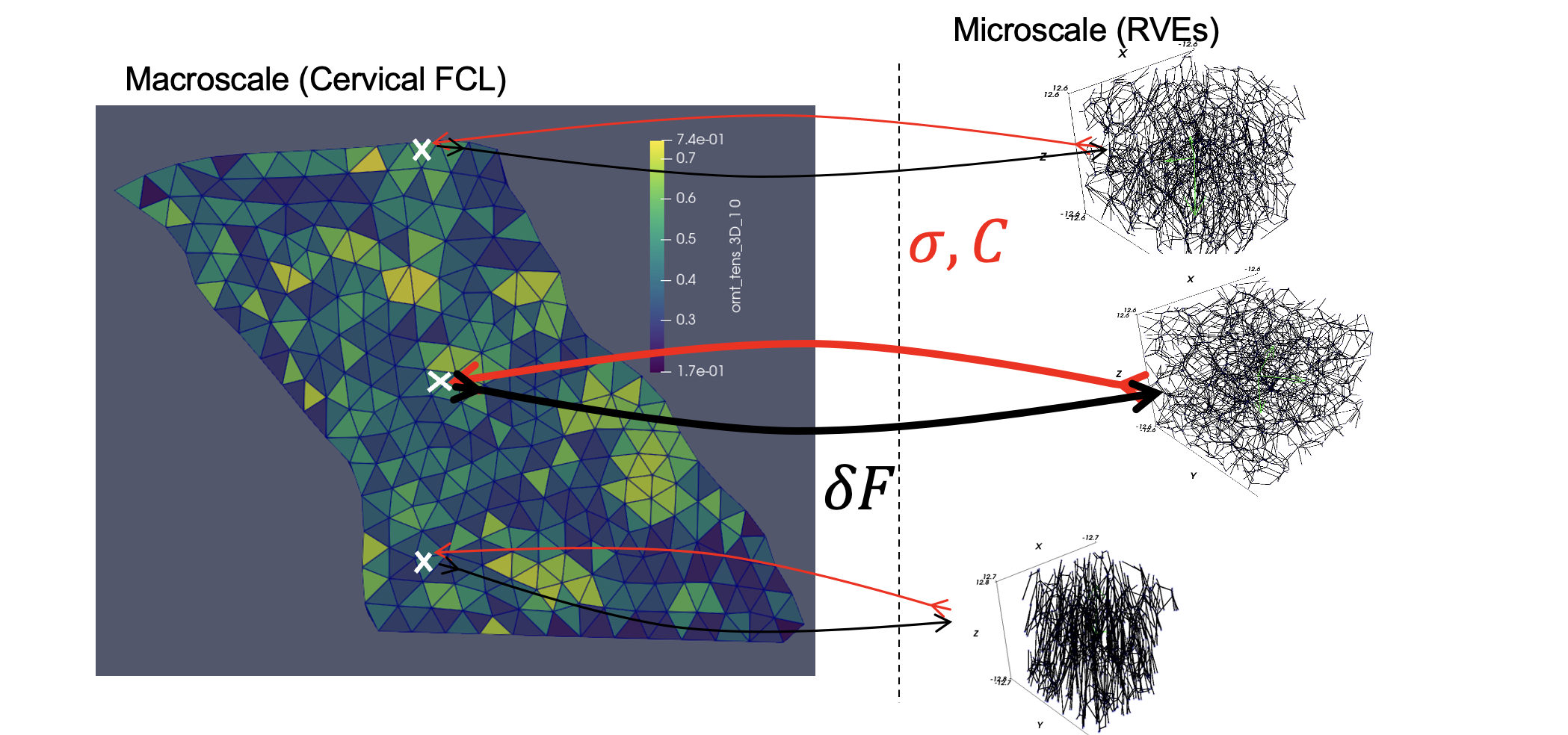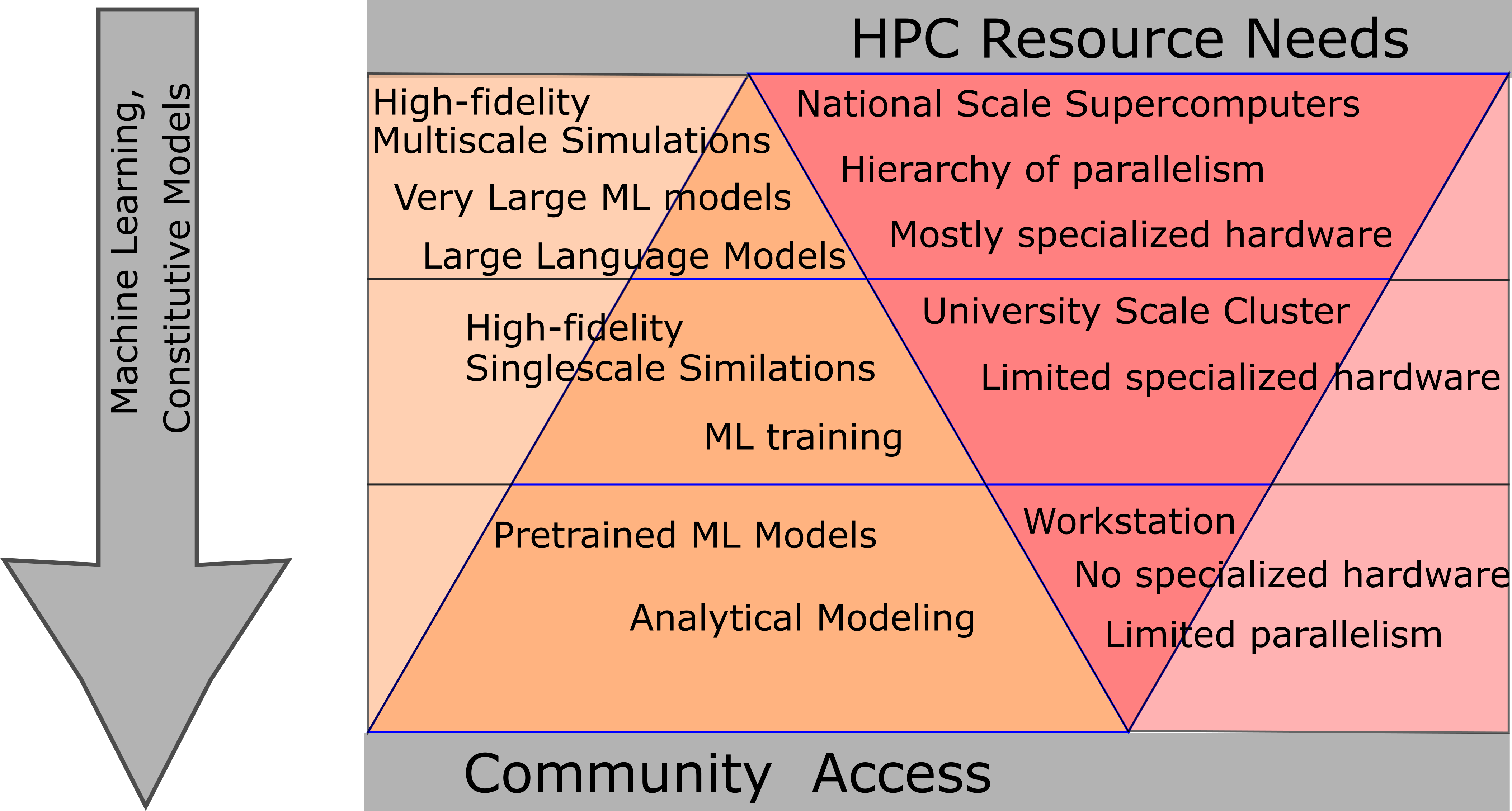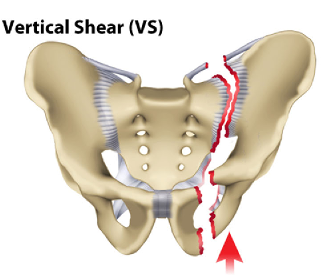Projects


Fibrous materials are common in engineering and biology with applications ranging from geotextiles to the extracellular matrix, collagen and actin gels. Modeling these materials on the engineering or biological scale is difficult because they move nonaffinely, are nonlocal, and heterogeneous. On one end of the spectrum, discrete network models can capture these micromechanics, but due to computational cost are precluded from modeling structures at the scales of interest. On the other end, continuum models can rapidly simulate biological or engineering scale behavior, but cannot capture the micromechanical complexity which is important for understanding disease progression.
MuMFiM is a multiscale framework for high performance simulations of fibrous materials. It is able to fill the gap between computational cost and capturing fiber micromechanics. To do this, it uses a FE2 finite element method and specialized data-parallel solvers that are optimized to run on GPUs combined with MPI distributed parallel solvers. Together, this enables computations on models that are directly constructed from various imaging modalities.

